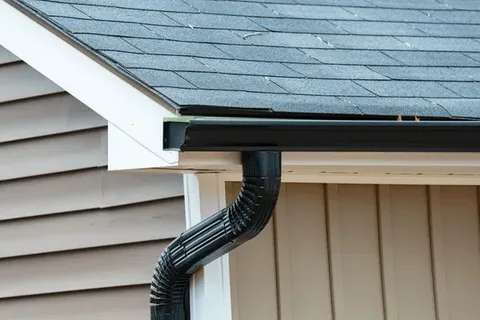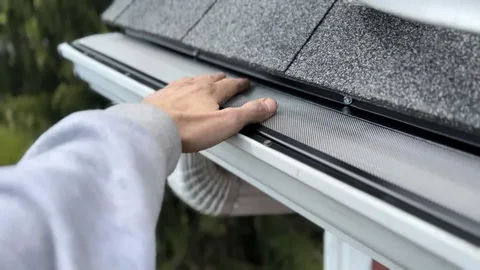Your home’s roof is one of its most critical components, providing protection against the elements and ensuring the safety and comfort of its occupants. However, over time, roofs can suffer wear and tear, leading to issues that may compromise their functionality. When faced with roofing problems, homeowners often find themselves at a crossroads: should they opt for a complete re-roofing or choose the less extensive route of roof repair? This decision is crucial, as it can impact the longevity of your roof, the overall safety of your home, and the financial investment required. In this article, we’ll explore the factors that influence the choice between re-roofing and roof repair, helping you make an informed decision for the well-being of your home.
Understanding the Home Roof Basics
1. Roof Repair: Addressing Specific Issues
Roof repair involves fixing specific issues without replacing the entire roof. It’s a targeted approach, focusing on problems like leaks, damaged shingles, or localized structural issues. This option is more cost-effective and less disruptive than re-roofing, making it an attractive choice for homeowners looking to address immediate concerns without a significant financial commitment.
2. Re-roofing: A Comprehensive Overhaul
Re-roofing, on the other hand, is a more extensive process that involves removing the existing roofing materials and replacing them entirely. This option is chosen when the roof is nearing the end of its lifespan, exhibiting widespread damage, or when a homeowner wants to upgrade to a new roofing material or style. While re-roofing requires a more substantial upfront investment, it provides the advantage of a brand-new, reliable roofing system.
Factors Influencing the Decision
1. Extent of Damage
The severity and extent of the damage to your roof are pivotal factors in deciding between repair and re-roofing. If the issues are isolated and confined to a small area, repair may be a suitable solution. Common problems like a few missing shingles, minor leaks, or isolated damage from a storm can often be effectively addressed through repairs. However, if the damage is extensive, widespread, or indicative of overall roof deterioration, re-roofing might be the more practical choice.
2. Age of the Roof
The age of your roof is a crucial consideration. Most roofing materials have a finite lifespan, and as a roof approaches the end of its expected life, it becomes more susceptible to various issues. If your roof is relatively new and the damage is minimal, repair may be sufficient to extend its lifespan. Conversely, if your roof is nearing the end of its expected life or has exceeded it, investing in re-roofing could be a more prudent long-term decision.
3. Cost Considerations
Finances play a significant role in the decision-making process. Roof repairs are generally more budget-friendly than a complete re-roofing project. If your budget is tight, and the damage to your roof is localized and manageable, opting for repairs may be the most sensible choice. However, it’s crucial to weigh this against the potential long-term costs of recurring repairs. If repairs become frequent, they may end up costing more in the long run than investing in a new roof.
4. Aesthetic Preferences and Home Value
Re-roofing allows homeowners to update the appearance of their homes and improve curb appeal. If you are looking to enhance the aesthetic appeal of your home, switch to a different roofing material, or ensure consistency with the neighborhood’s architectural style, re-roofing provides the opportunity for a comprehensive transformation. Additionally, a new roof can positively impact the resale value of your home, making it a worthwhile investment for those considering selling in the future.
5. Local Building Codes and Regulations
Local building codes and regulations may influence your decision. In some areas, there are restrictions on the number of times a roof can be re-roofed over existing layers, and building codes may require a complete tear-off in certain situations. It’s essential to be aware of and comply with local regulations to ensure that your roofing project meets the necessary standards.
6. Energy Efficiency and Environmental Impact
Modern roofing materials often come with enhanced energy efficiency features. If sustainability and energy efficiency are priorities for you, re-roofing provides an opportunity to upgrade to materials that offer better insulation and reflective properties. This not only improves your home’s energy efficiency but also contributes to a reduced environmental impact over the long term.
7. Time Constraints and Disruption Tolerance
The urgency of the situation and your tolerance for disruption should also be considered. Roof repairs are generally quicker to complete than a full re-roofing project. If time is of the essence, or if you prefer minimal disruption to your daily life, opting for repairs may be the more convenient choice. Re-roofing projects, while beneficial in the long run, can take more time and may temporarily inconvenience homeowners.
Making an Informed Roofing Decision
1. Consulting with Professionals
When faced with the decision between re-roofing and roof repair, it’s advisable to consult with roofing professionals. A qualified roofer can conduct a thorough inspection of your roof, assess the extent of the damage, and provide expert advice on the most appropriate course of action. Their insights can help you make an informed decision based on the specific conditions of your roof.
2. Considering Long-Term Value
While the upfront cost of re-roofing may be higher, it’s crucial to consider the long-term value it provides. A new roof not only addresses existing issues but also offers peace of mind and durability for many years to come. Repairs, while cost-effective initially, may become a recurring expense if the underlying problems are indicative of broader issues. Evaluating the long-term value of each option can guide you toward the most financially sound decision.
3. Exploring Financing Options
If budget constraints are a significant concern, explore financing options for both roof repair and re-roofing projects. Some roofing contractors offer financing plans that can help distribute the cost over a more manageable timeframe. While it’s essential to be mindful of interest rates and terms, financing can make the upfront investment of re-roofing more accessible for homeowners.
4. Getting Multiple Quotes
Before making a final decision, obtain quotes from multiple roofing contractors. This not only allows you to compare costs but also provides an opportunity to assess the expertise and reputation of different professionals. Consider the scope of work included in each quote, the quality of materials proposed, and the estimated timeline for completion. A comprehensive evaluation of multiple quotes can help you make a well-informed decision.
Exploring the Decision-Making Process Further
1. Understanding the Repair Process
If you lean towards roof repair, it’s essential to understand the repair process thoroughly. Repairs may involve fixing leaks, replacing damaged shingles, addressing flashing issues, or repairing minor structural damage. A skilled roofing professional will conduct a comprehensive inspection to identify all areas that require attention. Keep in mind that while repairs may provide a temporary solution, they might not be as effective if the overall integrity of the roof is compromised.
2. Considering Patching vs. Complete Repair
In some cases, a patch job might seem like a quick fix for a specific issue. However, patching is often a short-term solution and may not address underlying problems. Complete roof repair involves identifying and fixing all issues comprehensively, ensuring that the roof’s structure and integrity are maintained. Discuss with your roofing professional to determine the most appropriate approach based on the specific conditions of your roof.
3. Assessing Re-roofing Materials
If you’re leaning towards re-roofing, take the time to explore the various roofing materials available. Each material comes with its own set of advantages and disadvantages, including durability, aesthetic appeal, and cost. Common roofing materials include asphalt shingles, metal, tile, wood, and slate. Consider factors such as climate, local regulations, and your personal preferences when selecting the material that best suits your needs.
4. Factoring in Insurance Coverage
Before making a decision, check your homeowner’s insurance policy to understand what types of roof damage are covered. Insurance may cover some or all of the costs associated with roof repair or re-roofing, depending on the cause of the damage. Understanding your insurance coverage can significantly impact your financial decision-making process.
5. Planning for the Future
Whether you choose roof repair or re-roofing, it’s crucial to plan for the future. Regular maintenance is key to extending the lifespan of your roof. Work with your roofing professional to develop a maintenance plan that includes periodic inspections and necessary repairs. This proactive approach can help you catch issues early on and avoid more extensive and costly repairs in the future.
6. Understanding the Impact on Home Value
The condition of your roof can significantly impact the resale value of your home. A well-maintained and structurally sound roof is an attractive feature for potential buyers. If you’re considering selling your home in the future, investing in re-roofing can be a strategic decision that enhances your home’s marketability and value.
7. Environmental Considerations
Environmental considerations are increasingly becoming a priority for homeowners. If sustainability is a concern, explore eco-friendly roofing options. Some materials are recyclable, energy-efficient, and contribute to a greener home. Re-roofing provides an opportunity to make an environmentally conscious choice that aligns with your values.
8. DIY vs. Professional Services
While some minor roof repairs can be tackled as do-it-yourself projects, it’s crucial to recognize the limitations of DIY solutions. Roofing is a specialized skill, and improper repairs can lead to more significant issues. Re-roofing, in particular, should be left to experienced professionals due to its complexity and the potential for complications. Investing in professional services ensures the job is done correctly and up to industry standards.
Conclusion
In the end, the decision between re-roofing and roof repair hinges on a careful evaluation of your unique circumstances. There is no one-size-fits-all answer, and what works for one homeowner may not be suitable for another. Take the time to thoroughly assess the condition of your roof, your budgetary constraints, and your long-term goals for your home.
Engage in open communication with roofing professionals, seek multiple opinions, and ask questions to ensure you fully understand the scope of the work involved. A transparent and collaborative relationship with your chosen roofing contractor is essential for a successful project.
Remember that your roof plays a vital role in safeguarding your home and its occupants. Ignoring roofing issues or opting for temporary fixes can lead to more extensive and costly problems down the line. Whether you choose the targeted approach of roof repair or the comprehensive solution of re-roofing, prioritize the long-term health and resilience of your home.
In conclusion, by approaching the decision-making process with a holistic view, considering both short-term and long-term factors, you can make an informed choice that aligns with your priorities and ensures the continued well-being of your home. Roofing decisions are investments in the longevity and safety of your property, and with careful consideration, you can navigate the choices between re-roofing and roof repair with confidence.




